Svalbard is home to the world’s northernmost settlements, endless nights that stretch on for months, and enough polar bears that residents can’t leave the main town without a firearm.
So perhaps you’d assume that the Svalbard archipelago, located far north of the Arctic Circle at 78°N, would have some of the best chances for Northern lights viewing in the world. Well, not exactly so!
The Northern lights phenomenon is a lot more complex than just North + Dark = Lights, but many people don’t quite get that. And many people who haven’t actually experienced Svalbard in winter themselves erroneously think it’s one of the best places in the Arctic region to see the aurora borealis.
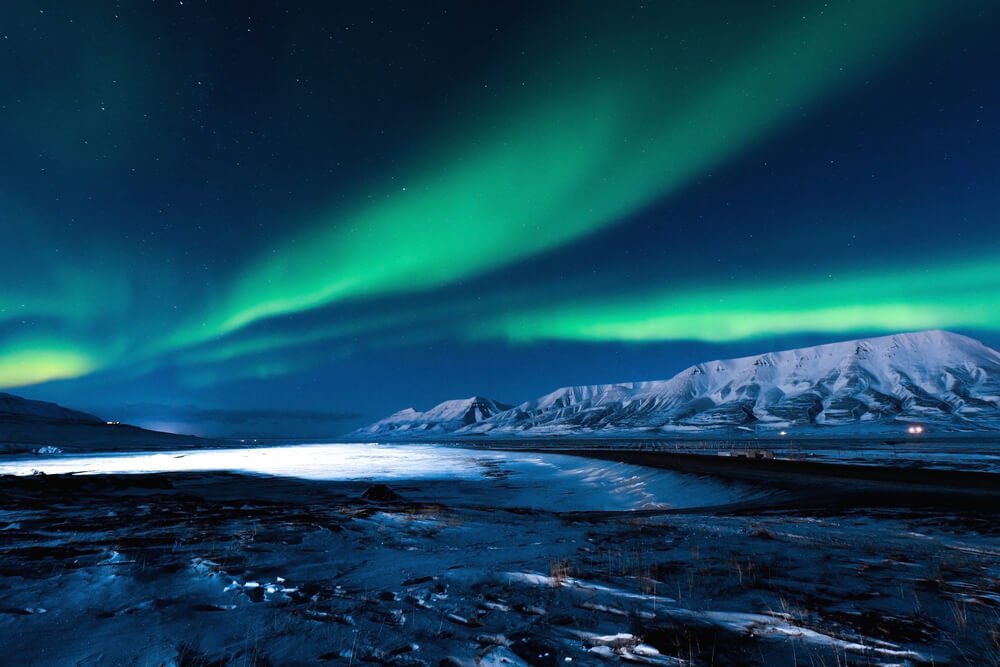
While there are a few unique perks of Svalbard for seeing the Northern lights (yes, it is true that you can sometimes see the aurora in the middle of the day!), there are also some downsides.
Those cons usually aren’t conveyed very well by bloggers who don’t know much about the science of auroras or the unique location and geography of Svalbard and how that impacts its ability to see the lights.
But me? I’m nothing if not pedantic. As a self-professed neurodivergent nerd who loves science (and particularly astronomy or any sort of study of space), I’m here to clear up some misconceptions about seeing the Northern lights in Svalbard.
This is not to say that you can’t see them in Svalbard — you absolutely can! — nor that you shouldn’t go to Svalbard in winter. There are many great reasons to go, like visiting ice caves, dog sledding, snowmobiling, and more!
But if you are going to Svalbard specifically to see the Northern lights, there are better places in Northern Norway to do just that, in my opinion, such as Alta or Tromso… or better yet, see the lights in Abisko in Sweden or Rovaniemi in Finland.
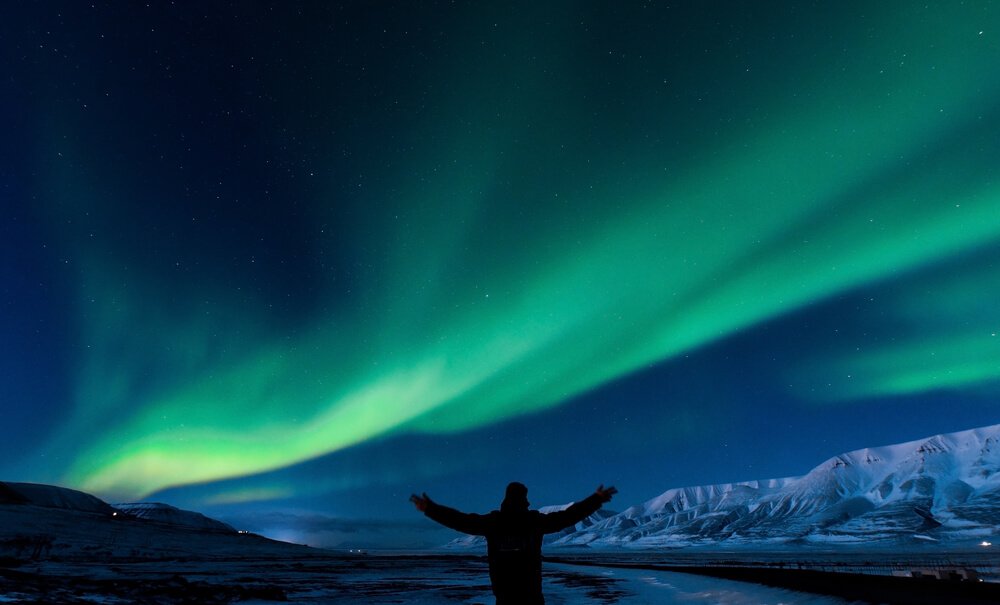
But if you’ve planned a trip to Svalbard in winter in hopes of seeing the lights, don’t fear — you absolutely have a good chance of seeing the Northern lights, and I’m sure you’ll have a perfect trip!
However, you’ll want to read this important information in order to have reasonable expectations.
Here’s what people don’t know about seeing the Northern lights in Svalbard, so you can be more informed before your trip.
Table of Contents
The Svalbard aurora season is actually shorter than most places in the Arctic

This surprises many people because they think that since Svalbard is located so far north, their winter season (and thus Northern lights) go on for nearly all the year. In reality, there are many places further south of Svalbard that get the Northern lights both earlier in the season as well as later.
For example, in places like Rovaniemi and Tromsø, you can see the aurora starting in late August. It’s not particularly common as there is still a lot of daylight, but it is possible.
Well, in Svalbard, the midnight sun ends on August 23rd… meaning there is absolutely no nighttime during the first few weeks of August, and the final week of August still has skies too bright to properly go aurora hunting.
The aurora season in Svalbard doesn’t start until late September, a full month later than places further south (but still north of the Arctic Circle). Similarly, the Northern lights season ends in Svalbard far earlier than in other Arctic destinations.

Aurora tours typically stop running Svalbard in the first week of March, when the sunlight hours start to stretch too long to have much chance of seeing the aurora. Meanwhile, aurora tours are still running strong in other Arctic destinations until around the first week of April.
So as you can see, the overall aurora season in Svalbard is nearly two months shorter than you’d find in other Arctic destinations, running only from late September to early March.
This is because while the dark season and polar night are quite long, midnight sun is never far behind. This makes picking the right time to visit Svalbard for the aurora quite crucial!
As soon as Svalbard leaves its dark period, it takes a running leap towards never-ending sunny days. The change happens much quicker than you’d think, ending the aurora season abruptly in March, while the summer months are still quite far away.
There is one very cool caveat to this, though: due to the extreme darkness of polar night at this latitude, the archipelago of Svalbard is the only permanently inhabited place on earth where you can see daytime auroras.
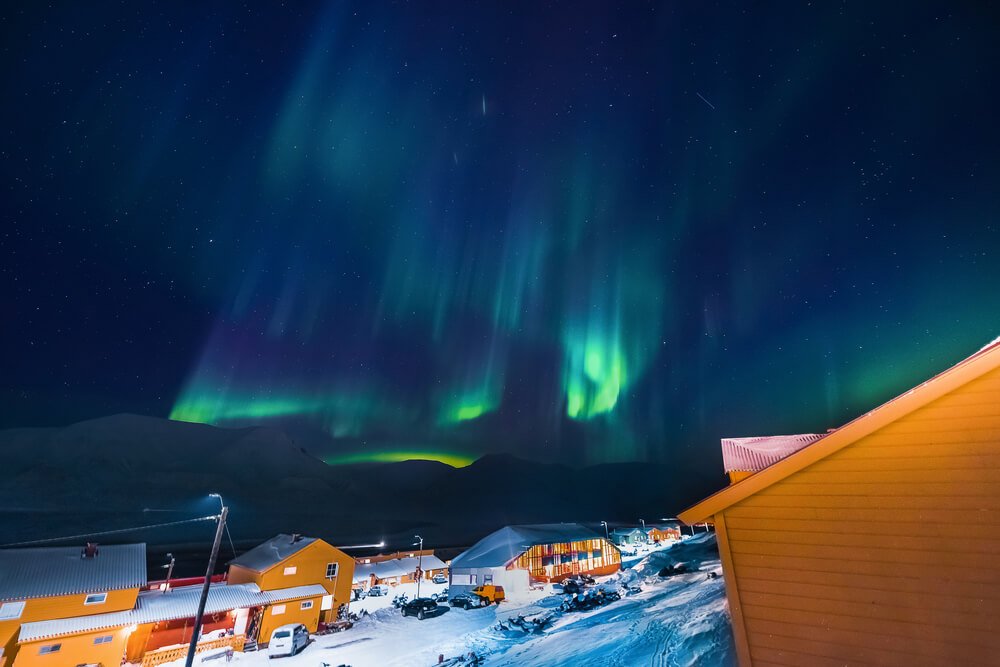
Yes, you can see the Northern lights in the middle of the day if you visit during Polar Night (November 11 to January 30). The daytime lights are typically fainter, but it’s certainly still possible to see them.
Visiting during the true polar night will undoubtedly increase your chances of seeing the Northern lights, since you don’t need to wait for darkness to happen… it’s literally dark all day long!
But this comes at a cost of not being able to properly see the beauty of Svalbard, since you have zero hours of daylight… and not even any twilight conditions.
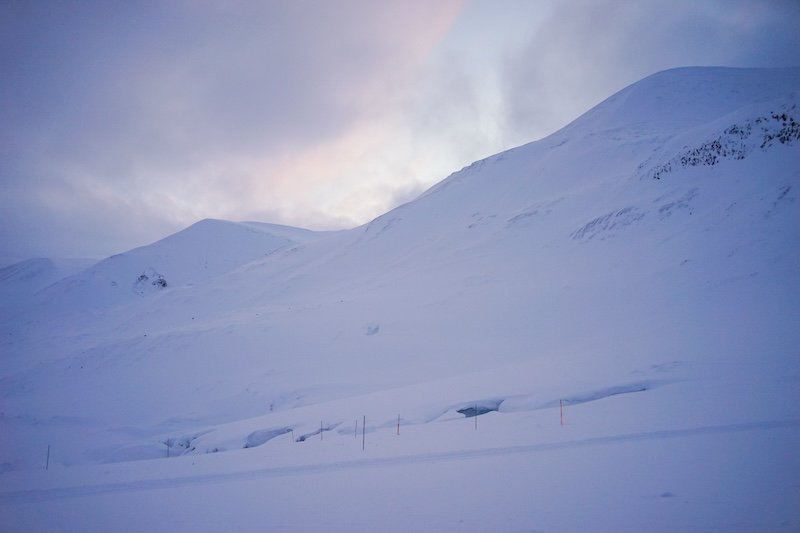
If you really want to see the aurora and experience a polar night, this could be a really cool experience.
Personally, I wouldn’t recommend it unless you’ve been to Svalbard before, especially since the extreme light conditions can be a huge shock to your body and circadian rhythms. Honestly, I’ve never been more tired in my life than when I visited Svalbard in February during the period when the sun doesn’t rise!
Even though we still had about six hours of twilight “blue light” hours that simulated daylight and signaled the passage of time, I was so thrown off! I can’t even imagine if I had visited during the true polar night.
It’s harder to chase Northern lights on Svalbard than elsewhere in the Arctic

I’ve taken aurora tours in many different places, and I’ve seen the aurora in Norway, Sweden, and Finland many times each — over a dozen times in total — so I know a little something about seeing the aurora at this point!
A good aurora tour is willing to do whatever it takes, within reason, to find a clear patch of sky. To paraphrase a friend of a friend who runs Northern lights tours: you’re not aurora chasing, you’re clear sky chasing.
But here’s the problem about doing that in Svalbard: there are only 45 kilometers of road on the entirety of the island of Spitsbergen, mostly all around the town of Longyearbyen.

That means if the immediate area around Longyearbyen is completely clouded over, you pretty much have no chance of finding clear skies. There’s just literally nowhere to go.
Oh, and also, due to the persistent threat of polar bears, you can’t leave Longyearbyen without a firearm, and you need a permit for that… which is not exactly easy to get as a tourist. So even if you were to rent a car in Svalbard, it’s not permitted to leave the village unless you have access to a firearm.
If you want to get out of Longyearbyen and have a better chance to see the Northern lights, you need to go via guided tour if you’re a tourist.
There are fun options such as a snowmobile tour or even a dog sledding tour, where you traverse the snow-covered Svalbard tundra in the pitch black in search of clear patches of the night sky. But even that’s a gamble!
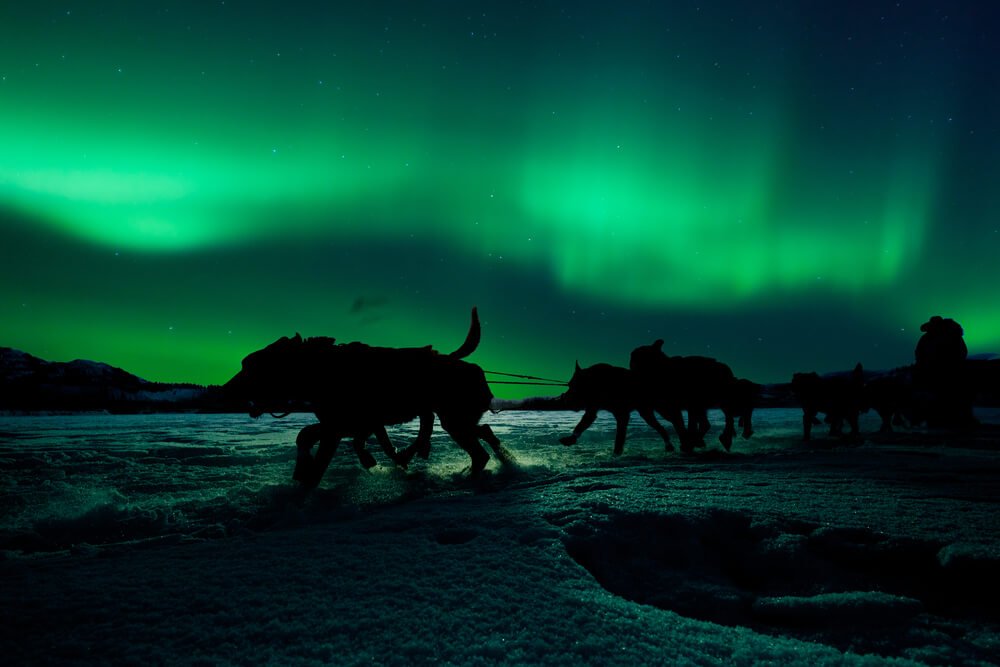
Personally, I did a Northern lights snowmobile tour during my February trip to Svalbard. While it was definitely fun to zip around in the pitch black night, we didn’t see a single glimpse of the aurora, despite a prediction of high activity levels.
In fact, in my four nights in Svalbard, I didn’t see the Northern lights even one time due to persistent cloud cover. Oh no… I guess I just have to go back!
If you want to see the aurora at its best, I suggest getting outside of Longyearbyen town.
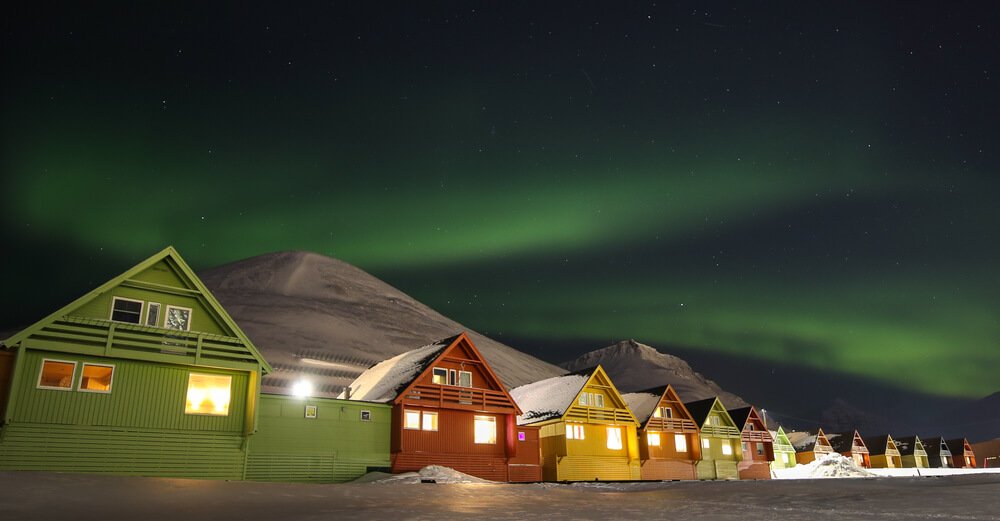
While you can definitely see the Northern lights in the village, as it’s not that bright, you’ll have a much more impressive impression of the aurora if you get away from light pollution.
There are a variety of Northern lights trips in Svalbard you can book that bring you outside of Longyearbyen, which you can’t do on your own due to polar bears and the regulations about needing firearms outside the village.
Here are my suggestions for Northern lights outings you can add to your Svalbard winter itinerary!
- Northern lights snowmobile tour (what I did!)
- Northern lights tour by car (haven’t tried it, but I did the same company’s wildlife photography tour and loved it)
- Camp Barentz wilderness camp evening (highly recommended by my friend)
- Dog sledding under the Northern lights (haven’t tried it, but I hope to next time I visit Svalbard in winter)
Being as close to the North Pole as Svalbard is means you’re out of the aurora zone
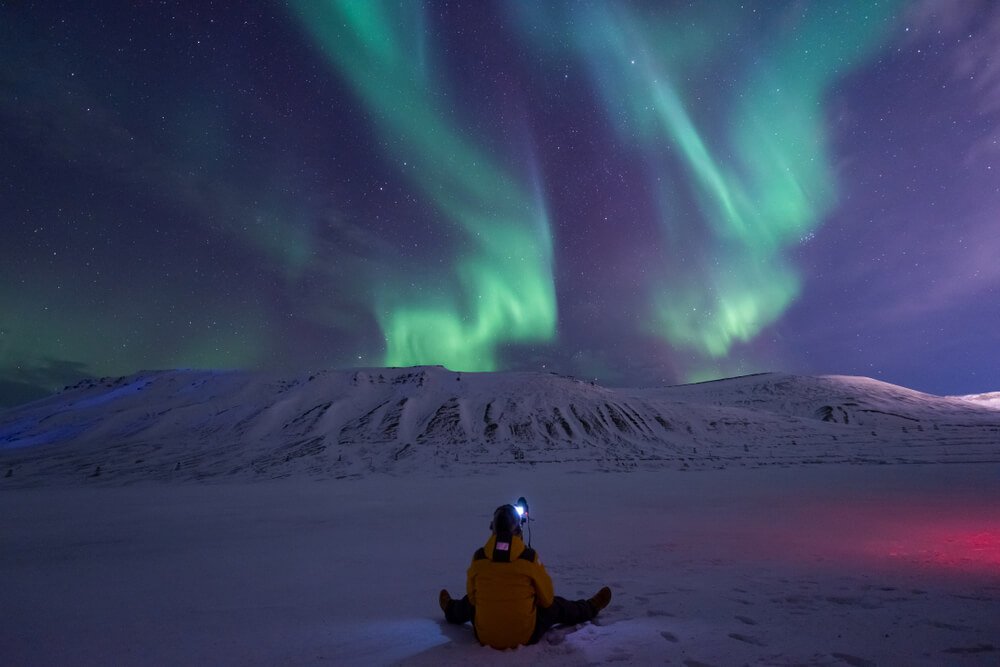
Here’s another counterintuitive thing about seeing the aurora in Svalbard: it’s not actually in what many scientists call the “aurora zone,” the latitude band in which seeing the Northern lights occurs the most frequently.
This isn’t a particularly well-defined term, so I can’t give a perfectly-agreed upon definition, but the rough range scientists give is between 65-72°N — leaving Svalbard, at a staggeringly high 78°N, out of the club.
It’s kind of confusing why this happens, but basically, it’s because when there are particular strong amounts of solar activity, the aurora band actually moves to lower latitudes.

Solar activity is measured by the Kp index — the higher the number, the further distance the aurora extends away from the polar regions (in the case of the Northern lights, the further south it goes).
When the Kp index rises above a certain amount, the aurora oval (the area in which you can presently see the aurora) shifts south — and due to Svalbard’s high latitude, when this happens, the Northern lights are no longer visible.
Contrary to what some people think, a lower Kp index in Svalbard is actually generally a good thing!
The middle of winter may not actually be best time to spot the aurora in Svalbard
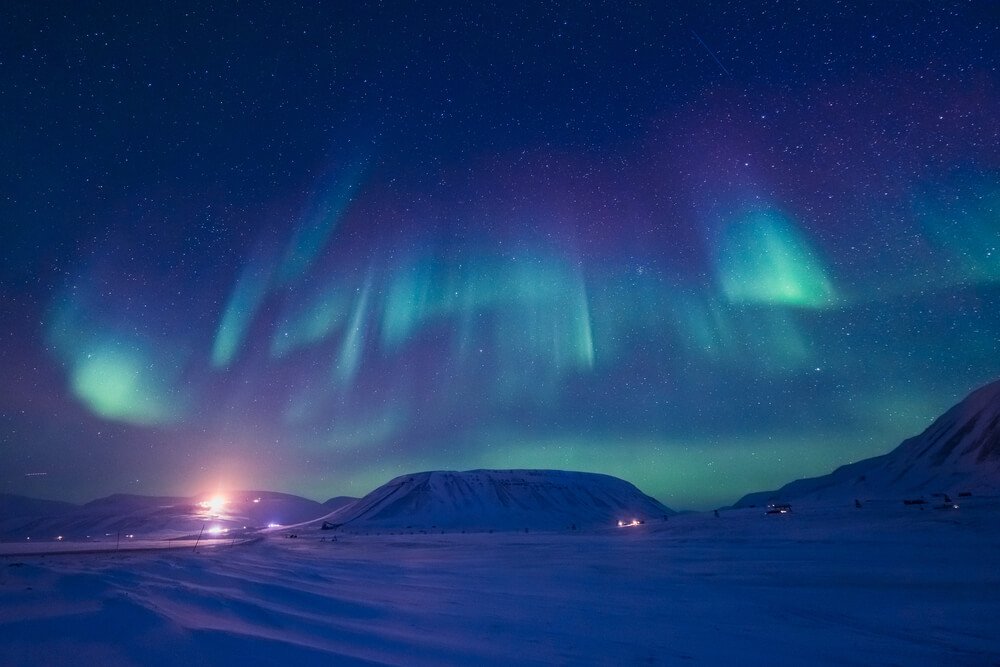
So, we’ve already established that Svalbard’s aurora season lasts from late September through early March. But what’s the best month in that period?
You might think that picking a time smack-dab in the middle of the winter season might be your best chances. Well, not so — I think that the “fall” months in Svalbard are actually probably a better bet.
OK, so technically Svalbard doesn’t have a proper fall — they divide the seasons into “Northern lights winter”, “sunny winter”, and “polar summer”. But when I say fall, I’m talking about what really feels like fall in other parts of the Northern hemisphere: namely, the months of October and November.
However, one thing that note that in October and November, there’s not enough snow to do certain activities like snowmobiling, so you’re somewhat limited in terms of ways you can see the lights.

That said, the Northern lights are a natural phenomenon that are reliant on a bunch of different factors. There’s solar activity, which itself can be broken down into the presence of the solar wind particles, the speed at which they’re moving, the density of these particles, and the direction that they’re moving (towards the earth’s magnetic field or not).
There’s also the need for enough hours of darkness for your eye to be able to perceive the lights. And, the most fickle factor of all, you need clear nights (read: no cloud cover) to see the lights.
You also need a lot of time and patience for all those factors to collide, so be sure to pack warm clothes (and maybe some hand warmers).
So, why is “fall” better in my estimation? Simply because usually, the majority of the winter storms haven’t moved into Svalbard yet by this time of year, meaning there is a higher likelihood of clear enough skies for aurora viewing.
My friend who lives in Finnish Lapland swears by the fact that the fall is generally the best time for the aurora, with the spring months close behind, and the middle of winter actually being the worst due to frequent snow storms, which bring in dense, low-lying clouds.
The aurora is not nearly as brightly colored as you might think it would be
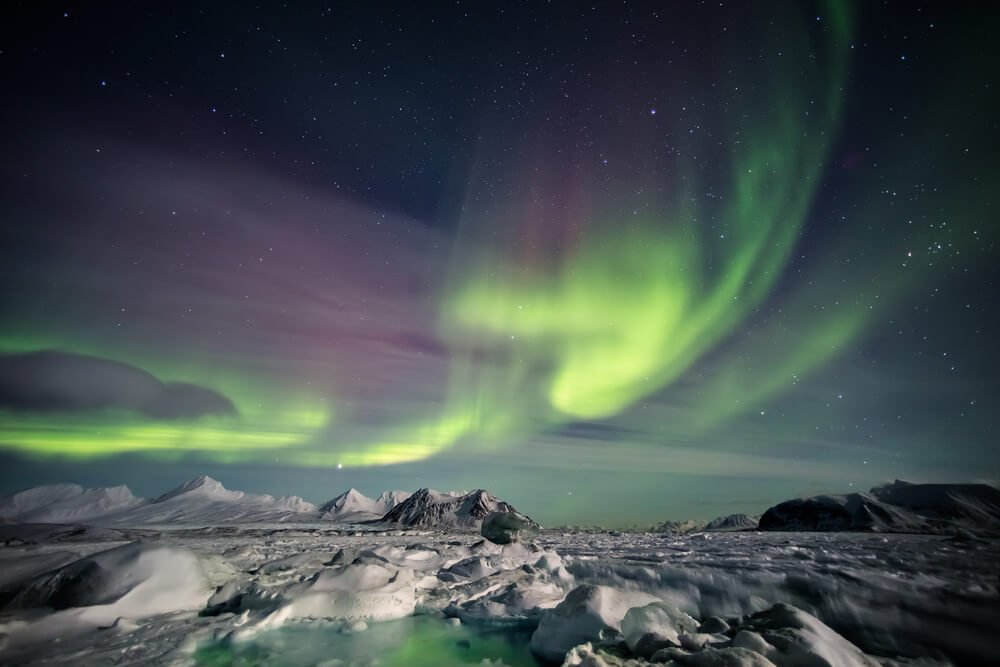
This is the number one thing I always try to convey to my readers about the Northern lights: no, it’s not really that bright in real life.
Once, when photographing the Northern lights in Alta, a girl came out and asked if I was photographing the lights. I said yes, and she scrunched up her face before asking, “so when do they go neon?” I had to hold back a little chuckle.
I don’t want to bring down your excitement about seeing the magical lights of the aurora.
Having seen them at least a dozen times, I can attest that they are spectacular and jaw-dropping, and I’m in awe of the universe and my small role in it every time I see it. As a person without any particular faith, they’re one of the closest things I have to a spiritual experience.
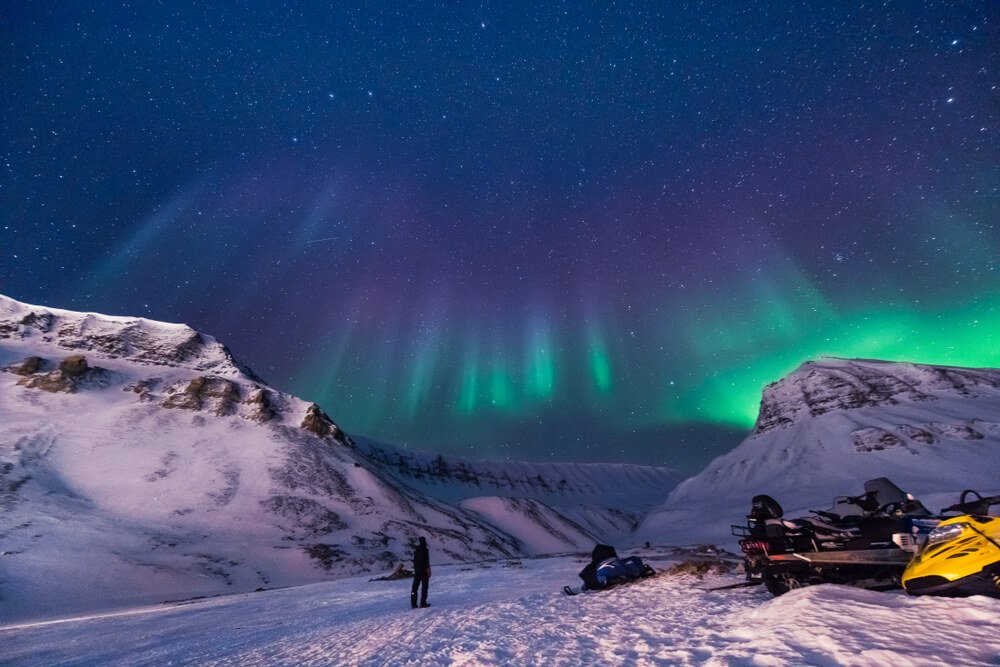
However, you have to understand how light works differently in a camera versus to your naked eye. The pictures you see of the aurora generally are taken with a shutter speed of about one to three seconds. Meanwhile, your eye takes in a lot less light, so you don’t see the color at the same saturation level.
When the Northern lights are quite faint, they look almost indistinguishable from clouds, and you can really only tell that they are Northern lights by the time you aim your camera at them and wait to see if some green color appears.
That said, in a few instances, I’ve seen the Northern lights during particularly explosive shows. On those instances, I’ve seen pretty vivid greens and once even some beautiful bursts of red with my naked eye. It was pretty spectacular, but this is the exception rather than the rule.
It’s better to have low expectations and have them blown out of the water than to have absurdly high expectations and leave disappointed. I want you to have the best trip possible, so hopefully this doesn’t discourage you, but instead just helps you have the right perspective.
Allison Green is a former teacher who has been travel blogging since 2016. She has a Masters in Teaching and a B.A. in English and Creative Writing. Her blog posts merge her background as an educator with her experience traveling to 70+ countries to encourage ethical, meaningful travel. She has been a speaker at the World Travel Writers Conference and her writing, photography, and podcasting work has appeared in National Geographic, CNN Arabic, CBC Canada, and Forbes, amongst others. Now a full-time traveler, she has lived in Prague, Sofia, New York City, and the San Francisco Bay Area.